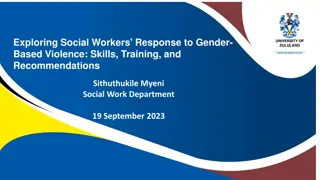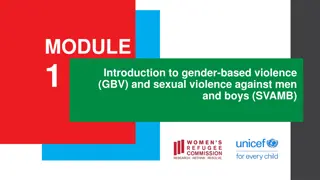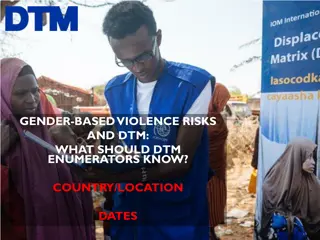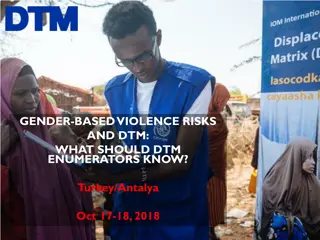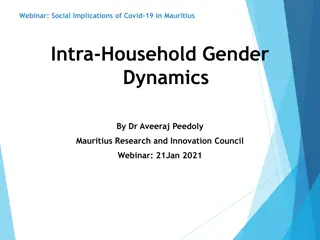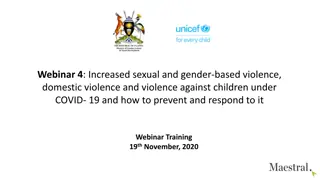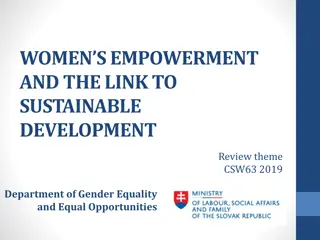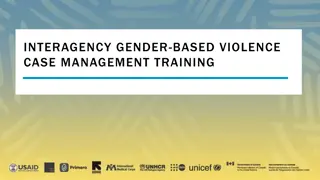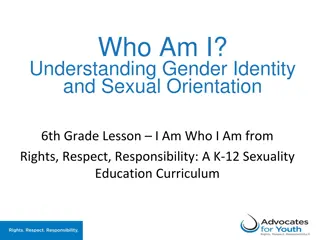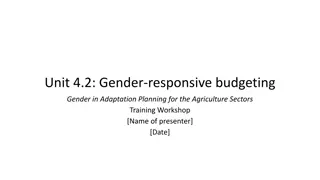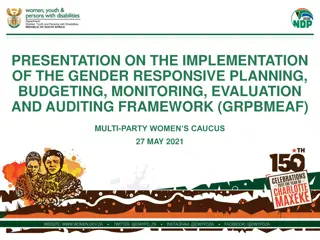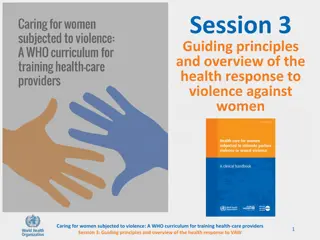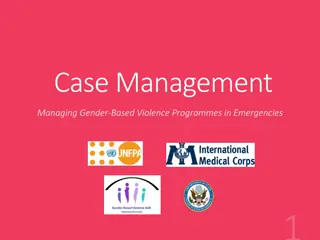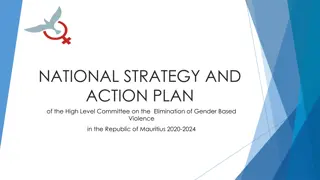Gender-Based Violence Information Management System Overview
Gender-Based Violence Information Management System, developed by Erin Kenny and Diana J. Arango on behalf of the GBVIMS Steering Committee, aims to enhance the understanding of best practices and limitations, improve data storage, analysis, and sharing related to GBV incidents, and promote effective coordination among stakeholders for a multi-sectoral response. The system includes tools like the Intake Form, Incident Recorder, and Information Sharing Protocol to collect, store, and analyze data for informed program decisions and survivor care. Visit www.gbvims.org for detailed insights.
Download Presentation

Please find below an Image/Link to download the presentation.
The content on the website is provided AS IS for your information and personal use only. It may not be sold, licensed, or shared on other websites without obtaining consent from the author. Download presentation by click this link. If you encounter any issues during the download, it is possible that the publisher has removed the file from their server.
E N D
Presentation Transcript
Gender-Based Violence Information Management System Erin Kenny and Diana J. Arango, UNFPA on behalf of the GBVIMS Steering Committee www.gbvims.org
Meeting Objectives Enable understanding of best practices reinforced by the GBVIMS Enable understanding of the GBVIMS, including its capacity and limitations www.gbvims.org
Background for the GBVIMS Need for effective and safe storage, analysis and sharing of GBV-related data. Need for a reliable picture of GBV being reported Minimal utility of data to inform program decisions Poor data = poor program monitoring = less effective prevention and care for survivors Limited data/information sharing among key stakeholders (for good reasons) affects GBV coordination and limits a multi-sectoral response. www.gbvims.org
One piece of the data puzzle www.gbvims.org
Data Analysis The Intake Form Reports & Proposals GBVIMS Data Informs Program Design The Incident Recorder Advocacy The Information Sharing Protocol A Standardised Process www.gbvims.org
The Intake Form 1. SURVIVOR INFORMATION 2. REFERRAL TYPE 3. DETAILS OF THE INCIDENT 4. PERPETRATOR INFO. 5. PLANNED ACTION 6. ASSESSMENT POINTS www.gbvims.org
GBV Classification Tool www.gbvims.org
The Incident Recorder and Data Analysis Safely stores standardized data Facilitates data entry and analysis Enable sharing of quantifiable elements of anonymous incident data Create aggregate statistics to determine correlations between characteristics and circumstances of GBV incidents www.gbvims.org
Information Sharing Protocol: Our Key to Letting Data Flow www.gbvims.org
Establishment of Good Practice Service provision must be available to GBV survivors if data is going to be gathered from them An agreement is established in collaboration with service providers to determine how data will be shared, protected, used and for what purpose Survivor/incident data is shared only with the informed consent of the client Survivor/incident data is de-identified Client case files are only shared within the context of a referral and with the consent of the survivor A service provider requires the most data to do their work. A lot less data is needed by everybody else. www.gbvims.org




